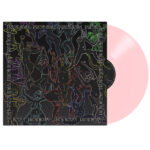Rachel Platten’s “Fight Song,” chosen as the unofficial anthem for Hillary Clinton’s 2016 presidential campaign, was widely considered a poor choice. Far from inspiring, the song became a point of contention and, for many, a symbol of the campaign’s missteps in connecting with voters.
Reports circulated of journalists and even campaign staff expressing their weariness with the repetitive playing of “Fight Song” at rallies and events. For many, the song’s ubiquity became grating, inspiring teeth-gritting frustration rather than enthusiasm. While intended to be catchy, it landed closer to irritating, and its presence lingered like an unwelcome earworm. The campaign’s decision to even create a Kidz Bop version for the Democratic National Convention only amplified the sense of disconnect.
It’s understandable that Hillary Clinton sought to establish a distinct campaign identity, separate from her husband’s and his association with Fleetwood Mac’s classic “Don’t Stop.” However, in the quest for a different sound, crucial considerations seemed to have been overlooked. While diverging from Fleetwood Mac was a stylistic choice, the selection of “Fight Song” missed fundamental marks: it lacked a clear message relevant to the campaign, and arguably, it was simply not a very good song for the purpose.
The core message of “Fight Song” centers on personal struggle and overcoming adversity to achieve success in the music industry. Rachel Platten herself has spoken about the song’s origins in her journey as a pop artist facing challenges. It’s an anthem of personal resilience, about proving oneself and silencing critics. While these are relatable themes, they felt strangely out of sync with a major presidential campaign.
Consider the chorus: “This is my fight song / Take back my life song / Prove I’m alright song.” These lyrics raise questions when applied to a candidate like Hillary Clinton. Was her life perceived as “taken away”? Was she in a position of needing to “take back” something or “prove” her well-being? Such phrasing seemed to inadvertently highlight potential vulnerabilities or negative narratives surrounding her, rather than projecting strength and leadership. The personal nature of the lyrics felt ill-fitting for the broad, national message a campaign anthem should convey.
Of course, not all campaign songs are lyrical masterpieces or perfectly aligned with a candidate’s platform. Many anthems are chosen more for their upbeat tempo and general positive vibes than for their profound message. However, even within that context, many argued that “Fight Song” simply lacked the musical quality to be effective.
Rachel Platten is undoubtedly a talented artist, and “Fight Song” achieved significant commercial success, selling millions of copies. Its popularity in commercials and as a general motivational tune is undeniable. The song resonates with many on a personal level as a soundtrack for overcoming personal obstacles. However, its application to a high-stakes political campaign felt like a forced and ultimately unsuccessful pairing.
The disconnect between the song’s personal message and the broader political context, combined with its arguably uninspired musical qualities for a campaign anthem, led to “Fight Song” becoming more of a symbol of the Hillary Clinton campaign’s struggles than a source of genuine inspiration or unity. Ultimately, the song choice became a talking point for the wrong reasons, overshadowing the intended message and becoming a memorable, if unfortunate, element of the 2016 election cycle.
Claire McNear, in her analysis, aptly critiques the selection of “Fight Song” as a campaign anthem. Her perspective highlights the song’s lyrical missteps and its overall unsuitability for the intended purpose, capturing the widespread sentiment that the song was simply a poor fit for Hillary Clinton’s 2016 presidential campaign.


